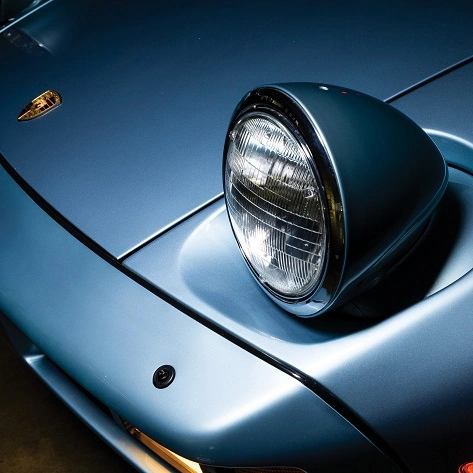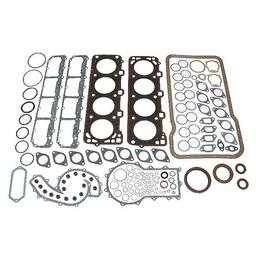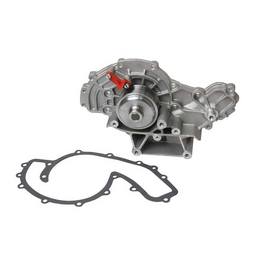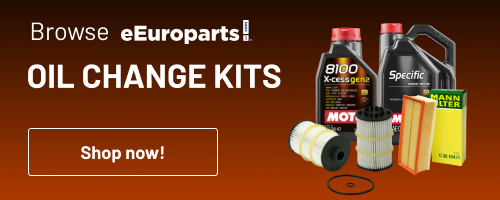While Porsche has made many great cars, the Porsche 928 is one of their most famous and important. The Porsche 928 was a first of its kind when it hit the roads in the late 1970s. It was designed to be a big tourer with the power of a sports car. Its unique innovation, power, and luxury mix stood out. This was a big change from Porsche’s previous design philosophy. This iconic car, known for its unique style and engineering ability, won fans’ hearts and changed people’s ideas about what a luxury sports car could be.
The Porsche 928’s journey is a tale of ambition, precision engineering, and a quest for perfection. From the sleek body lines that made it a head-turner on the streets to its V8 engine — a first for Porsche — every element of the Porsche 928 was a testament to Porsche’s commitment to pushing the boundaries. As we explore the legacy of this classic, we’ll also tackle its history, uncover fascinating facts, and share insights from seasoned technicians on maintaining the enduring charm of the Porsche 928.
Join us as we unfold the story of the Porsche 928, a vehicle that not only sets benchmarks in automotive design but also continues to be a revered classic, celebrated for its unique blend of style, performance, and innovation.

Porsche 928 — the Car That Almost Killed the 911
In a bold and nearly transformative decision for Porsche, the Porsche 928 was conceived as a potential replacement for the legendary Porsche 911. By the early ’70s, Porsche’s leadership, including managing director Ernst Fuhrmann, believed that the Porsche 911 had reached the zenith of its development. Their perception was that the Porsche 911, iconic as it was, had limited room for further improvement and innovation, thus sparking the need for a fresh flagship model to lead the company into the future.
The Birth of a Unique Porsche Design
The Porsche 928 significantly departed from the company’s previous design philosophy. It was the first model genuinely built “in-house,” designed from the ground up by Porsche engineers without relying on existing frameworks. This approach was in stark contrast to the lineage of the Porsche 911, which evolved from the Porsche 356, itself an offshoot of the Volkswagen Beetle. Similarly, the Porsche 914 was a collaborative effort with VW. The Porsche 928’s inception represented a clean break from this tradition, heralding a new era in Porsche’s automotive design.
Inspiration from the Corvette: Germany’s Own
Dubbed “German Corvette,” the Porsche 928 drew inspiration from the American sports car classic. This connection was more than superficial; the Porsche 928’s design, led by Wolfgang Möbius under the guidance of Anatole Lapine, who had a hand in designing the Corvette Stingray, shared a similar aesthetic ethos. This transatlantic design influence contributed to the Porsche 928’s distinctive look and feel, setting it apart from its Porsche siblings.

Competing with Luxury Titans: Mercedes-Benz and BMW
Porsche strategically positioned the 928 in the market to compete with luxury giants like Mercedes-Benz and BMW, particularly in the U.S. market. Though higher than the top-end Porsche 911, its price point was set to undercut the Mercedes S-Class significantly, making it a more accessible entry into the luxury grand touring segment. This pricing strategy aimed to attract a broader range of customers, especially in Porsche’s target market, the United States.
As the Porsche 928 was making its mark competing with luxury titans like Mercedes-Benz and BMW in the U.S. market, Porsche was also nurturing the growth of another intriguing model in its sports car lineage — the Porsche 944. Launched in the early 1980s, the 944 was a fascinating complement to the 928’s grand touring prowess.
While sharing the innovative spirit of the 928 with its front-engine, rear-wheel-drive layout, the 944 targeted a different segment of Porsche enthusiasts. It offered a blend of performance and accessibility that expanded Porsche’s reach in the sports car market. Visit our comprehensive blog post about Porsche 944 to learn more!
Design and Engineering — the Porsche 928’s Legacy
The Porsche 928’s engineering was a blend of innovative practices and technical advancements, setting a new benchmark for Porsche’s engineering capabilities. Key engineering feats include:
Innovative M28 Engine — The Porsche 928 featured Porsche’s first V8 engine, the M28. This was a significant departure from the air-cooled engines synonymous with earlier Porsche models. The M28’s engineering prowess was evident in its thick bore spacing, which reduced overheating and ensured reliability.
Weissach Axle — A revolutionary rear-axle design, the Weissach Axle improved handling and stability. This design effectively tackled oversteer by forcing the rear wheels to toe in during deceleration, thus enhancing the car’s grip and control during high-speed maneuvers.
Perfect Weight Distribution — With a front-engine and a rear transaxle design, the Porsche 928 achieved an almost perfect 50-50 weight distribution, a feature uncommon in most sports cars. This balance was pivotal in delivering the Porsche 928’s exceptional handling characteristics.
Design and Technologies Pioneered in the Porsche 928
The Porsche 928 was not just a marvel in engineering but also a trendsetter in automotive design and technology. Elements from the Porsche 928 that have influenced or are still being utilized in current Porsche models include:
Polyurethane Bumpers and Aerodynamic Design — The Porsche 928’s use of polyurethane bumpers seamlessly integrated into the body, and its overall aerodynamic design was ahead of its time. This design philosophy is echoed in the current Porsche model’s streamlined, aerodynamic profiles.
Passive Rear-Wheel Steering — The foundational technology behind the Weissach Axle can be seen as a precursor to the passive rear-wheel steering systems found in Porsche’s contemporary performance models, enhancing stability and agility.
Integrated Center Console — The Porsche 928’s center console significantly departed from previous Porsche designs. This feature, integrating the console seamlessly with the rest of the interior, has become a staple in modern Porsche models, from the 911 to the Panamera.
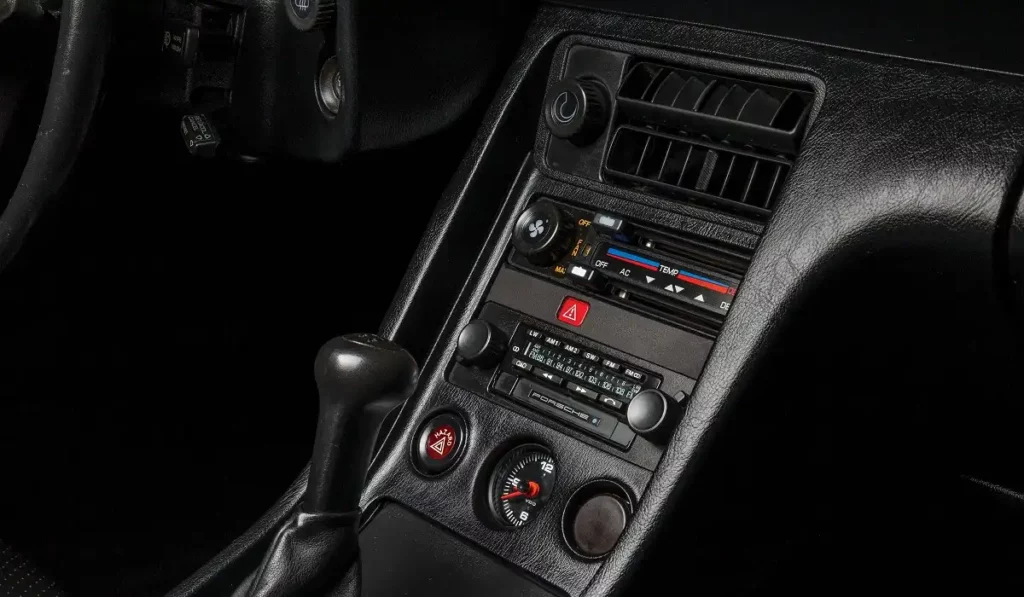
Porsche 928’s Common Issues
Despite its reputation for robustness and being an “engineer’s car,” the Porsche 928, like any classic vehicle, has its share of common issues. Its design, often described as “overbuilt,” reflects a commitment to durability and high performance. However, the passage of time and the complexities of its engineering can lead to certain challenges in maintenance and repair. Here, we’ll explore some of the typical problems that owners of this classic might encounter.
Engine Concerns
- Timing Belt — This critical component should be replaced every 4-5 years or 45,000 miles. Neglecting the timing belt can lead to severe engine damage, as it ensures the synchronization of the engine’s camshaft and crankshaft. Trust me, you don’t want to ignore this; a snapped belt can wreak havoc on your engine.
- Water Pump — Typically replaced alongside the timing belt every 45,000 miles or 4-5 years, as failure can lead to engine overheating and further damage. It’s a lesson many have learned the hard way.
- Coolant Leaks — Commonly occur at vulnerable points like the coolant hose, water pump, thermostat housing, and radiator. These leaks can compromise the engine’s cooling efficiency, leading to overheating. Watch out for puddles under your Porsche 928!
- Oil Leaks — Frequent at areas like the oil pan, cylinder head cover, and rear crankshaft seal. Aside from the messy oil leak marks on your driveway, these oil leaks can lead to reduced lubrication and potential engine damage.
- Thrust Bearing — A weak point in automatic models, requiring regular checks to prevent transmission failure. Keep an ear out for unusual sounds or shifting patterns, and don’t wait until the crankshaft wears into the internal casings of the engine! You might have to spend loads of cash for a new engine block or several hours of machining.
- Cracked/Leaking Fuel Lines — These can be sneaky and dangerous as they pose risks of fuel loss and potential fire hazards. Regular inspection and replacement are necessary for safety.
- Fuel Pump and Relay — I’ve seen many Porsche 928 stranded due to these failing, which can lead to engine stalling or non-start issues.
- Ignition System — Misfires and sluggish performance can often be traced back to worn-out ignition components. Sparkplugs, sparkplug wires, ignition coils, distributor caps, and rotors are among the items that will go bad if left unchecked.

Under Chassis and Suspension
- Worn Suspension Bushings — Handling getting a bit wobbly? It’s time to check those bushings. It’s a common aging symptom in the Porsche 928. This leads to compromised handling and increased tire wear. Upgrading to newer materials can enhance performance.
- Power Steering Leaks — Common in older models, these leaks can lead to steering difficulty and potential damage to the system. Not to mention the puddle of pink-ish ATF oil in your garage.
Transmission and Drivetrain
- Automatic Transmission Issues — Keep an eye (and ear) out for any unusual transmission behavior. Feel for any sluggish response and gear slipping. Regular fluid changes and inspections are crucial.
- Manual Transmission Problems — Gearbox wear and tear, including synchromesh issues, can lead to challenging shifts.
- Torque Tube Bearing Wear — Affects the driveline alignment and can cause vibrations and noises, necessitating timely repair or replacement.
Interior Challenges
- Interior Noises — An orchestra of rattles and squeaks is often part of the classic Porsche experience. These can range from dashboard rattles to squeaky seats, often due to aging or loose fittings. A little detective work can usually track down the culprit.
- Dashboard Cracks and Leather Issues — Those sunny drives are great, but they can take a toll on your dash. If your dashboard still looks great, a cover or UV protection can go a long way!
- Whining Noises — Some noises are typical for the Porsche 928, but unusual or loud whining may indicate mechanical issues.
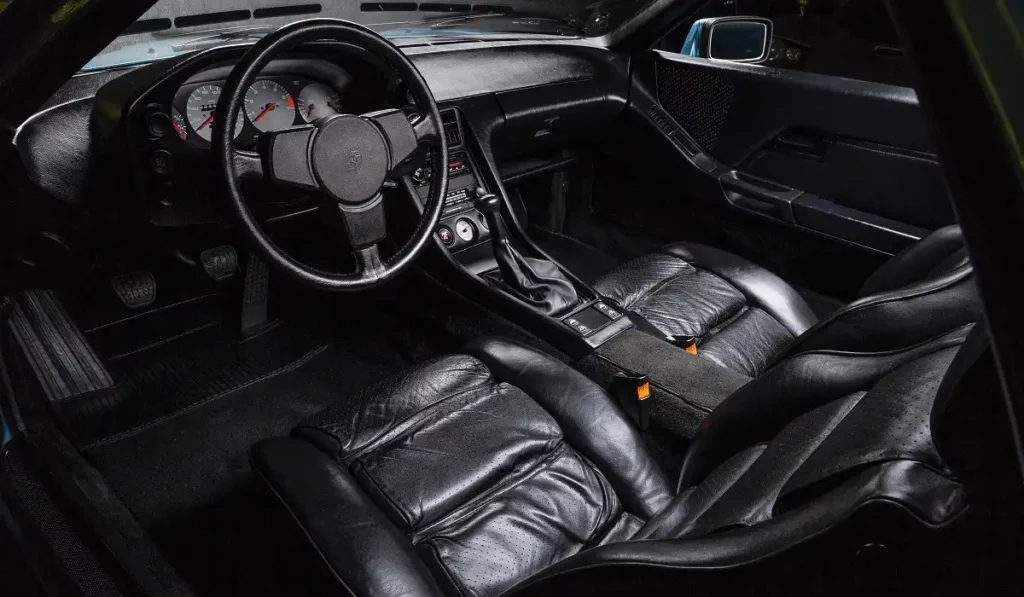
Exterior and Body
- Rust Resistance — Thanks to aluminum, galvanized sheets, and thick undercoat spray.
- Trunk Latch and Catch — Wear over time can lead to difficulty securing the trunk properly.
- Trunk Rattling — Addressed by applying Teflon tape on the sides to reduce movement and noise.
Electrical System
Wiring Issues — Commonly arise from aftermarket modifications like retrofitted radios; proper installation and grounding are key.
Ground Point Looseness — This can lead to intermittent electrical problems, requiring a check and tightening of ground points.
Wiring and Connector Degradation — Plastic connectors and insulation can degrade as the car ages, leading to electrical faults.
Headlight, Sunroof, and Power Windows — Issues here range from motor failures to switch malfunctions. These features are great when they work, but can be frustrating when they don’t. Regular maintenance is key.
Trunk Release and Rear Wiper Malfunctions — Don’t overlook these; they’re easy to fix but often forgotten. They require regular checks and maintenance to ensure proper functionality.
Keeping your Porsche 928 Happy On the Road
There’s something uniquely satisfying about cruising in a classic Porsche 928, feeling its distinctive roar and handling its smooth curves. However, keeping this classic beauty happily purring down the road requires a blend of dedication, know-how, and a touch of love. Whether it’s about pampering the engine, fine-tuning the suspension, or just understanding the quirks and charms of this iconic vehicle, every bit of care translates into miles of joyful driving. In this section, we’ll tackle essential tips and tricks for maintaining your Porsche 928, ensuring it remains a piece of automotive history and a vibrant and exhilarating companion on all your road adventures.

Engine Oil and Filter Change
- Every 5,000 miles or once a year, whichever comes first.
Ignition System
- Replace sparkplugs every 30,000 miles or every 2 years.
Air Intake and Fuel System
- Replace air filter every 30,000 miles or every 2 years.
- Replace fuel filter every 60,000 miles or every 4 years.
Engine Cooling System
- Check coolant levels and condition every 6 months.
- Flush and replace the coolant every 2 years.
Brake System
- Inspect brake pads, rotors, and fluid levels every 10,000 miles.
- Replace brake fluid every 2 years to prevent moisture build-up.
Transmission Fluid and Differential Oil
- Check level and condition every 30,000 miles.
- ATF needs to be replaced every 30,000 miles or every 2 years.
- Manual gearbox oil must be replaced every 60,000 miles or every 4 years.
- Differential oil must replaced every 60,000 miles or every 4 years.
- Replace if the fluid is dirty or has degraded if you don’t have any record of it being replaced.
Timing Belt and Water Pump
- Inspect the timing belt every 15,000 miles and replace it every 45,000 miles or every 3 years.
- Replace the water pump together with the timing belt as a preventive measure.
- Some say that the water pump can be replaced with every other replacement of the timing belt, but let’s be real: you don’t want to remove the timing belt when it’s not due for replacement just because of a leaky water pump!
Steering and Suspension
- Flush and replace power steering fluid every 30,000 miles or every 2 years.
- Inspect suspension components and steering system every 10,000 miles.
- Replace worn bushings, ball joints, and other components as needed.
Tire Inspection and Rotation
- Check tire pressure and tread depth monthly.
- Rotate tires every 5,000 miles to ensure even wear.
Special Considerations for Classic Cars:
Plastic and Rubber Components
- Plastic and rubber parts, like hoses, vacuum lines, brake lines, suspension mounts, and other parts, tend to harden and crack over time, so check and repair them more often.
Electrical Connections
- To prevent short circuits and fires, often check the wires and electrical connections for signs of wear or corrosion and open conductors.
- Clean and protect electrical contacts to prevent electrical failures.
Rust Prevention
- Regularly check for rust, especially in hidden areas like undercarriages.
- Apply rust inhibitors or coatings as necessary.
Interior Preservation
- Protect the dashboard and upholstery from sun damage using sunshades or UV protectant products.
- Condition leather regularly to prevent cracking.
Storage
- If you are storing the vehicle for longer periods, use a breathable car cover, maintain battery charge, and consider adding a fuel stabilizer.
Record Keeping
- Keep detailed records of all maintenance work and parts replacements. This not only aids in proper care but also enhances the car’s value.
Looking for Porsche Classic Parts? Choose eEuroparts.com!
For classic Porsche enthusiasts, particularly those cherishing models like the iconic Porsche 928, eEuroparts.com is an essential source for premium parts. Our extensive inventory is specifically tailored to meet the unique needs of Porsche classics, ensuring you find the perfect match for your vehicle.
At eEuroparts.com, we combine a wide selection of high-quality, authentic parts with the expertise and passion of true Porsche aficionados. This ensures providing the right parts and invaluable guidance for your specific needs. Navigating our user-friendly website is a breeze, allowing you to effortlessly find parts by model, year, or particular requirements, complete with comprehensive descriptions and compatibility details.
Your satisfaction is our priority. We are committed to providing extensive support and advice, enhancing your experience of owning and maintaining a classic Porsche.
For reliable, top-quality parts for your classic Porsche, choose eEuroparts.com and become part of a community dedicated to preserving the legacy of these timeless vehicles.

